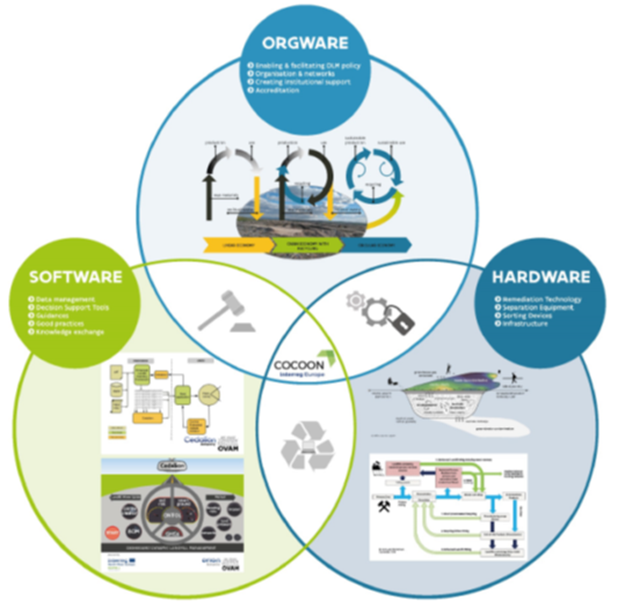Brownfields and blackfields
Work focuses on the following subtopics:
-
Developing planning strategies and tools for the reuse of soil & land resources through soil remediation as key to a circular economy, in the context of safeguarding greenfields and ‘good quality soils’ for use as open, agricultural or natural space. Enlarging the scope and further developing the methods emerging from projects such as REPAiR and COCOON, which dealt with wastescapes and brownfields. And developing policy instruments, like Dynamic Landfill Management, for resource management in peri-urban areas.
-
Assess benefits of soil remediation in socio-economic contexts and models (brownfield development, interim/multiple/temporary usages, mixed functions, circular economy on the site, expanding the potential of urban farming, restoring urban ecosystem services, etc.), social contexts (affordable housing through more available space, etc.), and health measures (addressing pollution and creating more healthy living environments, dealing with emerging contaminants, etc.).
-
Address challenges of integrated approaches towards land as a resource in an urban context, e.g. nature-based remediation techniques with multiple benefits, use of new business and financial models, multi-actor processes and coaching, data availability and data mining, legal framework (how to deal with the ‘common vs private’ aspect of urban soils, etc.). As well as how to adapt land management and spatial planning processes to guarantee efficient use of land and soil.
-
In a circular economy, soil or sediment excavated for remediation or infrastructural work purposes can be used as secondary raw material (e.g. building or construction material). For safe use of excavated soil/sediment as secondary raw material and to guarantee and monitor safe reuse, there is need for knowledge on safe reuse practice, sustainable and cost-effective treatment options and a legal and management framework, combined with spatial planning and land management tools.
A framework for soil health in the reuse of landfill sites and brownfields
Frameworks and tools have been developed under EU projects Cocoon, Rawfill and Regeneratis for the optimal redevelopment and resource recovery of landfill sites in the context of the concept of Dynamic Landfill Management. Cedalion, Orion and ONTOL (Online Tool for the Evaluation of Landfill Mining Projects) have a strong focus on safeguarding good quality soils (‘avoid & reduce’) – thanks to their spatial planning component - as well as regenerating healthy soil and land. And a new approach on forest and nature restoration on landfill sites is being deployed as of 2021.
In the context of landfill characterisation, the RAWFILL project also developed the HADESS method (Hazardless Acquisition of landfill Data by using geophysical Exploration and Surveying Strategy). The purpose of HADESS is to provide a high-performance strategy for data acquisition on landfill sites. Geophysical survey methods may be used to enhance the characterisation of landfill sites, in terms of the spatial extent/volume and/or the composition/distribution of waste materials across a site. Geophysical methods, correctly applied, help to better understand landfills and estimate their landfill mining potential for optimal resource recovery in support of a circular economy.

